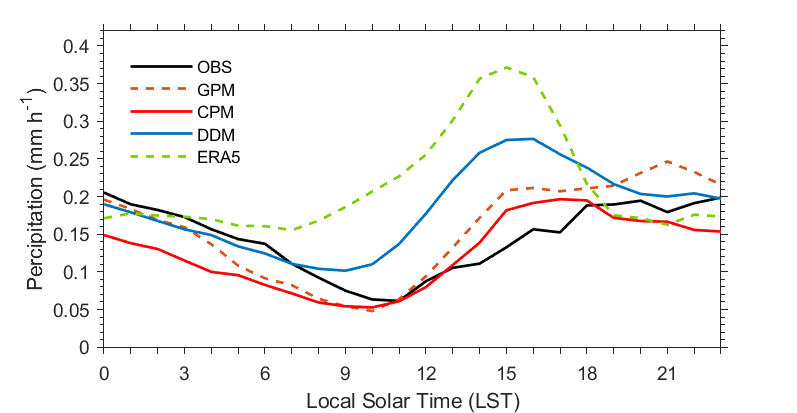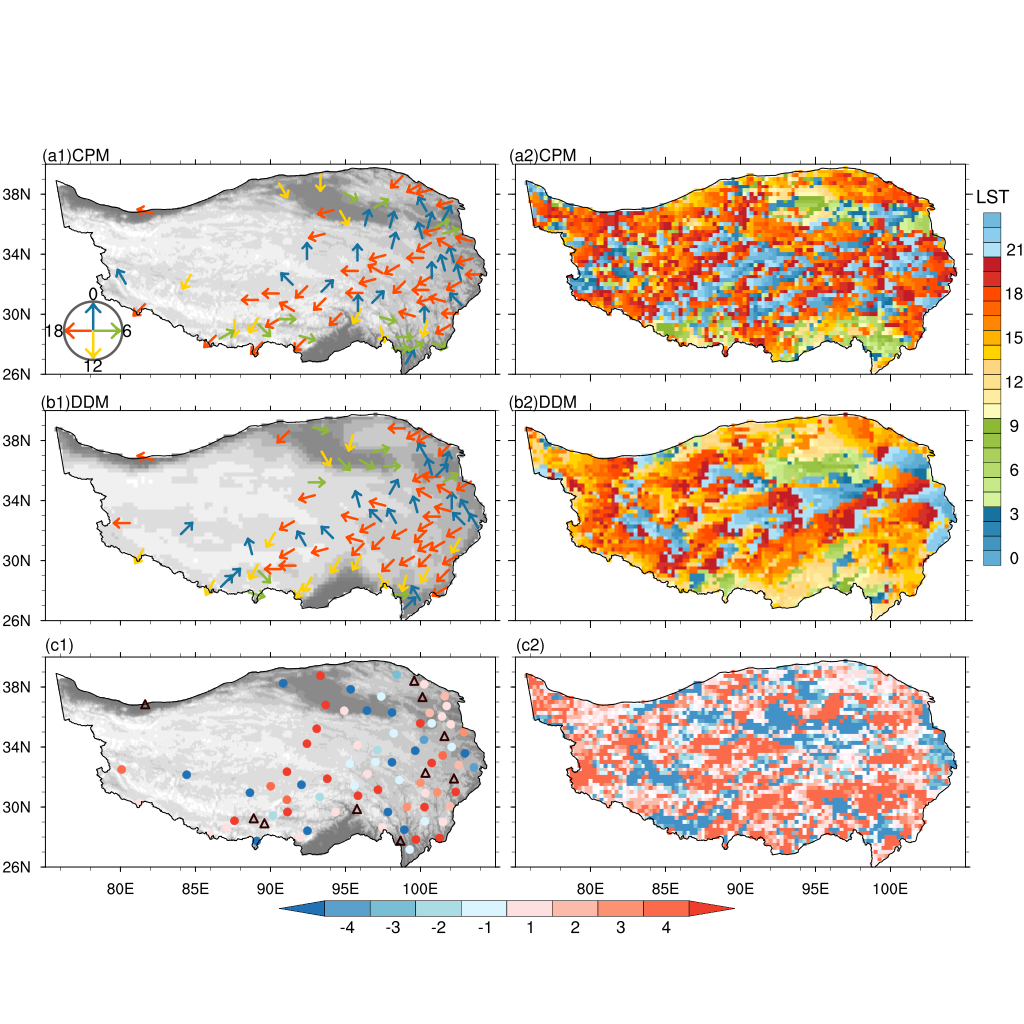降水是青藏高原水循環過程的重要一環,準確的降水數據對於理解陸氣相互作用和區域水資源管理至關重要。然而,獲取高原上準確的降水數據至今仍然是一大挑戰。高大陡峭的地形和惡劣的環境使得觀測設備難以建立、維護🗃,高原上站點分布稀疏不均,無法獲得高質量降水觀測數據🎷。而且🧑🏼🍳,一些研究指出全球氣候模式對高原降水的模擬存在顯著高估🎳。隨著計算機水平的快速發展,公裏級別的對流允許尺度模擬逐漸進入大家的研究視野,精細的地形描述和對流過程的顯示解析使其在降水模擬中存在優勢👰🏻♀️,那麽其在高原上將表現如何呢💨?
為了更好地描述高原夏季降水的時空分布特征🧉,沐鸣2高艷紅教授研究團隊開展了對流允許尺度模擬(4 km📍,CPM)和動力降尺度模擬(28 km🛼,DDM)✵。首先,他們以站點觀測為準,綜合評估了兩套降水模擬數據和四套降水網格數據(APHRODITE、GPM、ERA-Interim和ERA5)在高原上的性能🩻;然後以降水日變化特征為重點🕘,從水汽輸送和對流能量角度解釋了模擬數據(CPM🚙,DDM)與再分析資料(ERA5)的差異;最後,通過分析濕對流不穩定度條件,深入挖掘降水日變化差異的物理機理。
研究表明🟨,這6套數據在降水量上存在較大差異🤾🏽♀️,這些差異主要由降水頻率引起。其中APHRODITE和GPM的結果與站點觀測最接近💇🏻🧌,而兩套再分析資料表現出嚴重的降水高估,且ERA5中降水日峰值過早過強👨🏼🎨🦪,與觀測嚴重不符🧌,這與其較強的水汽輸送和過早出現的強CAPE峰值有關。DDM和CPM對降水的模擬顯著優於再分析資料,尤其是CPM在降水日變化中表現出明顯優勢👏:它能夠更準確地表示出高原夏季降水在下午較晚時刻到夜間的峰值(1500-2400LST),而DDM則表現出較早的下午峰值(1500-1600LST)🤸🏽。進一步研究發現,DDM中大部分站點/格點濕對流不穩定度比CPM大,使得其對流觸發過早過強,導致了DDM中較早的下午峰值。
該研究揭示了公裏尺度在高原降水模擬中的顯著優勢👨🏽🔧,提出高分辨率模擬改進青藏高原降水模擬機理的新思路。碩士生劉朝陽同學為第一作者,高艷紅教授為通訊作者。該文章於2022年1月發表於Climate Dynamics🤹🏻。
Liu Z, Gao Y, Zhang G, 2021: How well can a convection-permitting-modelling improve the simulation of summer precipitation diurnal cycle over the Tibetan Plateau? Clim Dyn,10.1007/s00382-021-06090-3.

Fig. 1 Diurnal variations of summer mean precipitation averaged over 83 CMA stations on the TP among OBS, GPM, CPM, DDM and ERA5 (units: mm/h). The black solid line indicates the results of in-situ observations; the orange dashed, red solid, blue solid and green dashed lines indicate the values at the nearest 0.25° grid cell to the CMA stations in GPM, CPM, DDM and ERA5, respectively

Fig. 2 Distributions of the precipitation diurnal peak time (LST) in June 2014 at 83 CMA stations (left) and grid cells over the whole TP for (a1–a2) CPM and (b1–b2) DDM. Differences between CPM and DDM are exhibit in panel (c1–c2). The red dots in (c1) represent that the precipitation diurnal peak of CPM at this station is later than that of DDM. The blue dots represent that CPM has an earlier precipitation peak time than DDM. Stations with the same peak time in the two simulations are represented by black triangles.

Fig. 3 The vertical equivalent potential temperature rates of decline (γept) during 0900LST to 2100LST in the lower atmosphere (unit: K/km) for the two types of stations/grids in red and blue in Figs.2 (c1–c2). For the left (right) -hand side of the gray vertical dot line, △LST<0 (>0) denotes an earlier (latter) precipitation diurnal peak in CPM than DDM, which correspond to blue (red) in Figs.2 (c1–c2)




